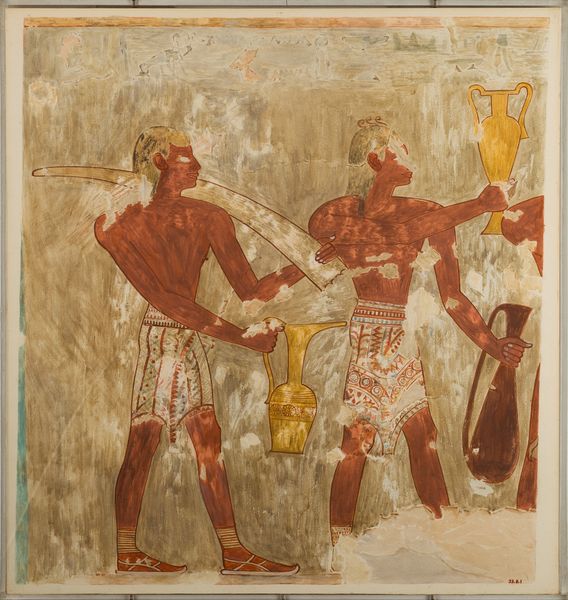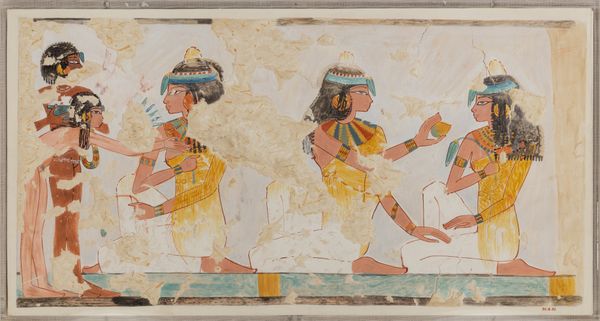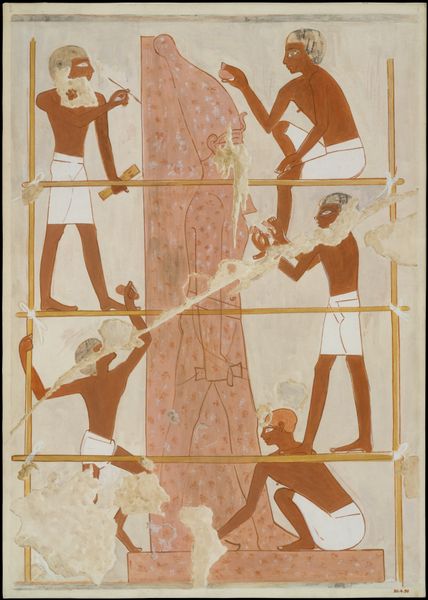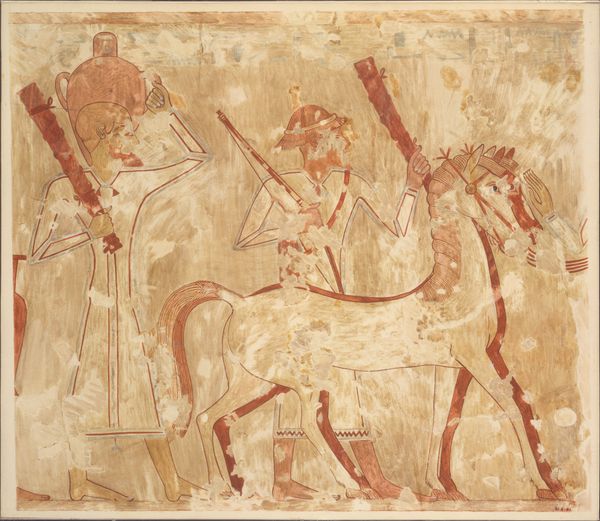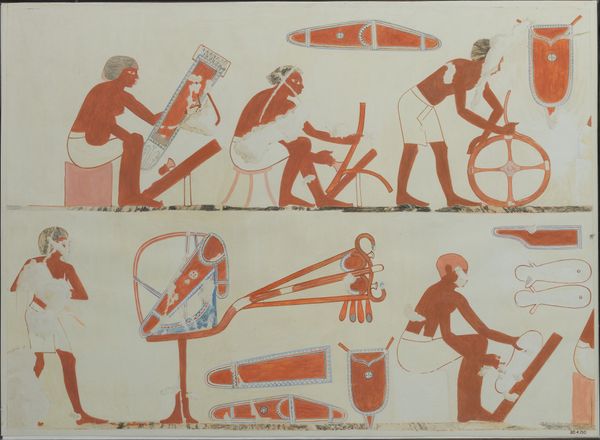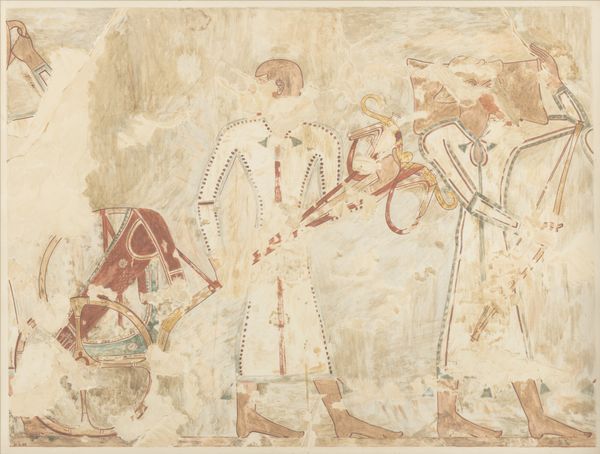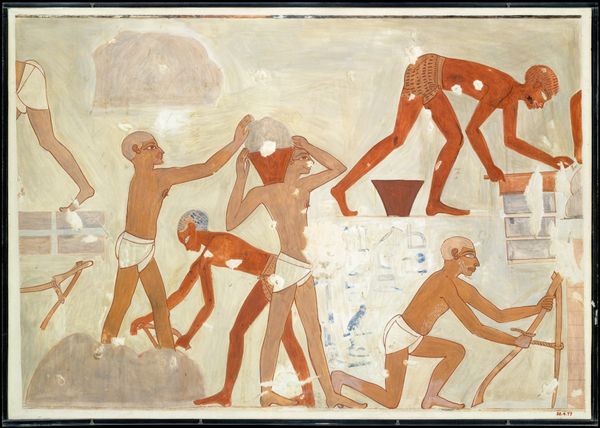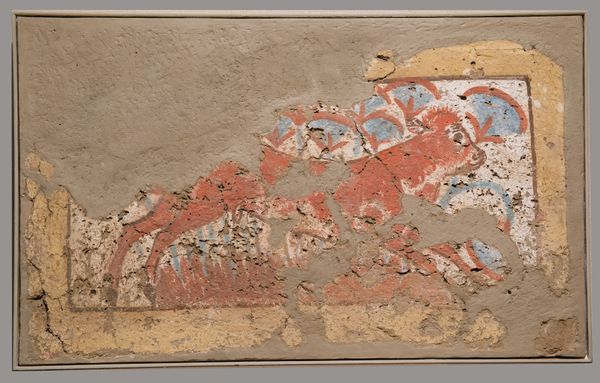
tempera, painting, fresco
#
portrait
#
water colours
#
narrative-art
#
tempera
#
painting
#
ancient-egyptian-art
#
figuration
#
fresco
#
egypt
#
ancient-mediterranean
#
men
#
history-painting
#
watercolor
Dimensions: facsimile: h. 33 cm (13 in); w. 43.5 cm (17 1/8 in) scale 1:1 framed: h. 36.2 cm (14 1/4 in); w. 46.7 cm (18 3/8 in)
Copyright: Public Domain
Curator: This watercolor titled "Gathering Honey, Tomb of Rekhmire," dating back to 1479 BC and currently residing at the Metropolitan Museum of Art, offers a glimpse into ancient Egyptian life. What are your initial thoughts? Editor: Striking. There’s a clear focus on horizontality, emphasized by the stacked shapes and the implied line of activity. The colour palette is earthy, muted. It gives an immediate sense of ordered labor. Curator: Absolutely. Considering the period and its context, the creation of tempera itself speaks volumes. Pigments were derived from minerals, plants, and even insects. The entire process, from material sourcing to the layering of color, demanded a coordinated workforce reflecting Egypt’s complex social hierarchies. Editor: I’m more interested in the forms themselves. The shapes create a clear sense of rhythm, guiding the eye. There is an interesting interplay between the angular, block-like forms in contrast to the curved rendering of the workers and their vessels. It introduces visual tension. Curator: But it's not just about abstract composition! This fresco provides invaluable insights into beekeeping in ancient Egypt, revealing details about their techniques, tools, and the importance of honey in their economy and rituals. The bodies are rendered according to canon, and they participate in what appears to be an everyday action. We gain such clear data from these paintings. Editor: And yet, even through these depictions, the rendering of the human form follows a specific geometry. Notice the eye, the shoulders: these formal qualities adhere to specific patterns and stylization common in Egyptian art. This gives rise to meaning that expands the artwork’s function. Curator: I concede the formalism. It’s a remarkable encapsulation of labor within a structured society, meticulously recorded. I find its depiction of labour, as well as its creation, reveals volumes about this ancient world. Editor: I see it more as an instance where simple lines, colours, and their particular organisation manage to convey something essential about humanity. I leave it at that.
Comments
No comments
Be the first to comment and join the conversation on the ultimate creative platform.



